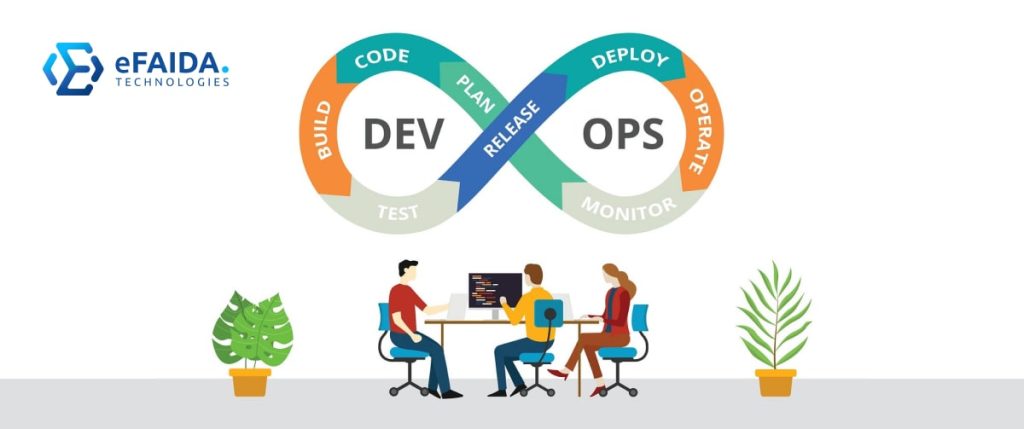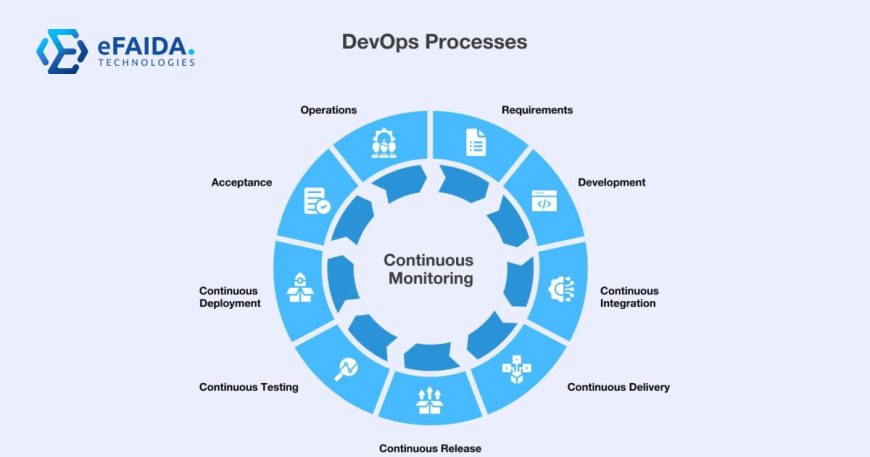Introduction
In the modern world, where software development is rather rapidly progressing, flexibility and productivity are life-crucial. Using the old methodology, one is unable to respond to the stimulus and this results in slow release of the products and unsatisfied customers. DevOps as a Service (DaaS) comes out as a strong option for achieving the desired goals of an organization and implementing DevOps practices within the framework of a managed service model. However, the subject of DaaS does not stop here with occasional references to its application coming across as somewhat daunting. This guide defines the stages so that you will feel well-equipped to successfully implement your DaaS strategy.
Step 1: Assess Your Needs and Goals
Before diving into DaaS, it’s crucial to understand your current development environment. Identify your pain points:
- Slow release cycles?
- Siloed Dev and Ops teams?
- Manual and error-prone deployments?
- Difficulty scaling infrastructure?
Define your goals for DaaS implementation. Are you aiming to:
- Reduce deployment times?
- Improve software quality?
- Foster better collaboration between teams?
- Achieve greater scalability?
Having a clear understanding of your needs and goals will guide your DaaS selection and implementation strategy.
Step 2: Evaluate DaaS Providers
With a clear picture of your requirements, research potential DaaS providers. Consider factors like:
- Security: Experience in a good security position is preferred, but not mandatory. This security issue; ensures that the provider has better security measures in place and complies with the best practices.
- Scalability: It is also important to establish a relationship with a provider that would be willing to accommodate the fast-paced changes in demand.
- Tools and Integrations: Based on the information provided above, DevOps tools and integrations offered by the specific provider assess the ways of managing and implementing them. Is it a match with what you already are using or what you prefer?
- Pricing Model: Understand the Pricing difference between providers and also understand more about the pricing models. These include what is offered and any additional cost for the use, and any other form of additional cost.
- Customer Support: as with any other software application, proper customer support that will be capable of responding to a variety of different issues is not only helpful but necessary.
Many DaaS providers offer free trials or limited tiers. Utilize these to test the platform and assess its suitability for your needs.

Step 3: Plan Your DaaS Implementation
Once you’ve chosen a DaaS provider, meticulous planning is key. Here’s what to consider:
- Team Training: Provide an organizational training program to your development and operations professionals regarding the management of new tools and working methodologies coming with DaaS.
- Process Migration: Describe an approach to transport the existing development workflows into the DaaS platform. This may include the ability to input and connect with other tools and methods in the DaaS platform.
- Security Configuration: Further, adjust the available general and security settings of the DaaS environment in light of your organization’s security standards and policies.
- Performance Monitoring: It will also be instrumental in the setting of critical success factors that will help you track the success of your contracted DaaS services. From the author’s side, this implies tracking key measures such as lead time for deployments, the defect escape rate, and application uptime.
Step 4: Implement and Monitor
When established that all the necessary and appropriate steps have been planned fully, ensure that they are put into practice fully. Sometimes it will require the transportation of information, setting up tools, and optimization of processes and procedures. Oversee the process and introduce the necessary changes if required, to the challenges appearing during the execution of the process.

Step 5: Continuous Improvement
It can be safely claimed that DaaS management is an ongoing process when it comes to its successful deployment. This means having a clear view of the current state of the business and performing constant checkups on the KPIs as well as the feedback received from the users to learn of any areas that need adjustment. Embed experiences into your workflows, review the possibilities and the new features the DaaS provider can offer, and the shifting of development trends.
To accomplish these steps and build positive changes, the principle of DevOps as a Service is always willing to help you triumph through an agile, efficient, and high-performance software development lifecycle when you warmly welcome all its proven policies of continuous improvement.
Conclusion
To achieve the desired outcome of a center-of-excellence DevOps as a Service model, there are several key steps to go through in a structured and managed way. Thus, using the steps outlined in this guide and taking into account the possible difficulties, you and your teams can successfully use DaaS solutions to enhance the development processes and provide your end-users with powerful value. Thus, DaaS is on the verge of revolutionizing the software development sphere as it is a perfect solution for modern companies striving to perform well in the digital space.
Frequently Asked Questions
Q1. What are the typical costs associated with DaaS implementation?
The cost of DaaS also depends on such variables as the provider, features, and the scale of the business in question. Expenses may pertain to monthly charges, per GB/MB access fees for certain resources and storage space, as well as one-time setup/migration costs.
Q2. Can I implement DaaS with a limited internal IT team?
Yes. One of the main selling points of DaaS is that control of the underlying infrastructure and several of the most typical DevOps tools lies with the service provider rather than with your in-house IT staff. However, some amount of expertise is still needed in terms of configuration, migration of processes, and future management.
Q3. How long does a typical DaaS implementation take?
The duration can be further influenced by the current state of your environment, the provider of DaaS in question, or the scope of the migration effort. The time taken to implement can be a few weeks to several months.
Q4. What are the biggest challenges associated with DaaS implementation?
Cultural change management is often a challenge, especially when trying to synchronize the Dev and Ops teams for effective DaaS. New tools and workflows should be accepted and implemented without any resistance which will require adequate training and communication.




